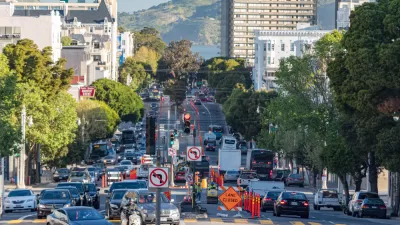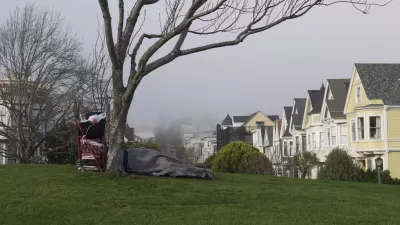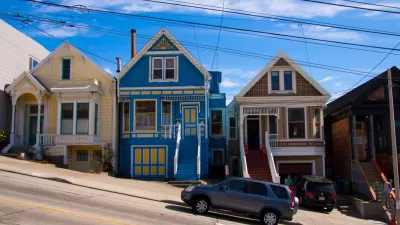Sen. Scott Wiener introduced legislation to make state highways that run through villages, town, and cities, often acting as main streets, accommodate the safety needs of walkers, cyclists, and transit users when undergoing capital improvements.
It was just over a decade that Republican Gov. Arnold Schwarzenegger signed Sen. Mark Leno's (D-San Francisco) landmark legislation, Assembly Bill 1358, the Complete Streets Act, ensuring that all local streets and roads accommodate the needs of bicyclists, pedestrians and transit riders, as well as motorists.
State highways, the domain of the California Department of Transportation (Caltrans), was the subject of an internal policy document known as Deputy Directive 64 [pdf], "that explicitly embraces Complete Streets as the policy covering all phases of state highway projects, from planning to construction to maintenance and repair," according to a Complete Streets Fact Sheet prepared by the California Bicycle Coalition (CalBike). However, progress has been slow.
“For too long, Caltrans has talked about complete streets as a policy, but hasn’t actually delivered these improvements in its projects," said Sen. Scott Wiener [D-San Francisco) at a press conference held at Zuckerberg San Francisco General Hospital on Jan. 14.
"SB 127 ensures that as we rehabilitate state highways that run through the centers of our towns and cities, we prioritize active transportation uses like walking, bicycling, and riding public transportation.
"Streets designed for all residents create safer, healthier, and more inclusive communities. Ensuring everyone has access to safe streets also encourages alternate modes of transportation, which can help reduce vehicle miles traveled, and help us fight climate change.”
The bill "is stronger and more thorough than the Complete Streets bill Wiener introduced last year [SB 760] but let die when Prop 6 threatened to disrupt new gas tax revenue," reports Melanie Curry, editor of Streetsblog California.
According to the legislation, the bill would require Caltrans, by January 1, 2021, "when undertaking any capital improvement project on a state highway or a local street crossing a state highway that is funded through the State Highway Operation and Protection Program, to include new pedestrian and bicycle facilities, or improve existing facilities, as part of the project."
At the press conference, speakers in support of the legislation addressed traffic crashes that injured walkers and cyclists on 19th Ave. and Park Presidio Blvd., both part of State Route 1, maintained by Caltrans.
Dr. Rebecca Plavin, a trauma surgeon at the hospital, stated that her department treats about 4,000 patients annually for trauma, "and nearly half are injured in traffic collisions...and about half of those are pedestrians and cyclists."
Additionally, the bill would establish a Division of Active Transportation within Caltrans to oversee the existing Active Transportation Program and require that an undersecretary of the Transportation Agency be assigned to it.
SB 127 is sponsored by the California Bicycle Coalition, the Safe Routes to School National Partnership, California Walks, and the American Heart Association/American Stroke Association.
FULL STORY: Bill Would Make State Highways–Which Are Often City Streets–Accommodate All Users

Planetizen Federal Action Tracker
A weekly monitor of how Trump’s orders and actions are impacting planners and planning in America.

Map: Where Senate Republicans Want to Sell Your Public Lands
For public land advocates, the Senate Republicans’ proposal to sell millions of acres of public land in the West is “the biggest fight of their careers.”

Restaurant Patios Were a Pandemic Win — Why Were They so Hard to Keep?
Social distancing requirements and changes in travel patterns prompted cities to pilot new uses for street and sidewalk space. Then it got complicated.

Platform Pilsner: Vancouver Transit Agency Releases... a Beer?
TransLink will receive a portion of every sale of the four-pack.

Toronto Weighs Cheaper Transit, Parking Hikes for Major Events
Special event rates would take effect during large festivals, sports games and concerts to ‘discourage driving, manage congestion and free up space for transit.”

Berlin to Consider Car-Free Zone Larger Than Manhattan
The area bound by the 22-mile Ringbahn would still allow 12 uses of a private automobile per year per person, and several other exemptions.
Urban Design for Planners 1: Software Tools
This six-course series explores essential urban design concepts using open source software and equips planners with the tools they need to participate fully in the urban design process.
Planning for Universal Design
Learn the tools for implementing Universal Design in planning regulations.
Heyer Gruel & Associates PA
JM Goldson LLC
Custer County Colorado
City of Camden Redevelopment Agency
City of Astoria
Transportation Research & Education Center (TREC) at Portland State University
Camden Redevelopment Agency
City of Claremont
Municipality of Princeton (NJ)





























